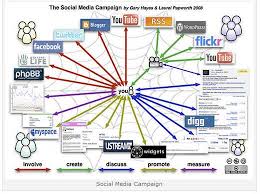Examples of social applications that drive higher levels of engagement include SocialVibe’s charitable giving application Starbucks’ use of Foursquare (a location-based social application). In Europe, Opel Vauxhall has created a customer service built on Twitter using its basic accounts, @opelblog, and @vauxhall along with the hashtags #OpelService and #VauxhallService, allowing customers to easily connect, ask questions, and make other inquiries relating to these automobiles. Twitter is a social application with obvious business development and customer care applications: Twitter enables two-way interaction between a business and its customers (and between customers themselves). Dell’s Small Business group, Comcast’s customer service team, and Australian telecom firm Telstra all use Twitter as a conduit for information that connects their respective business programs with their particular customers. Given the encompassing nature of social applications, how then does one segregate the various functions and uses of these tools for planning and design purposes?
Clearly, lumping together Dell’s “IdeaStorm,” SocialVibe’s charitable giving application and Foursquare’s “Mayor’s” designations as used by Starbucks and saying “I want one of those” isn’t likely to produce a successful outcome. What’s needed is a way to categorize the various types of social applications so that they can be connected with business objectives. Business objectives, after all, drive the specification and development of social applications.
Josh points out the roughly 60/40 split between the uses of social technology in business for branding (about 60 percent) versus collaborative applications (about 40 percent). While lots of businesses and organizations are using social Media recent CMO surveys have put adoption at something north of 80 percent the majority of these uses are still rooted in a traditional approach to marketing. The people count will certainly collect around the available social sites and the requisite appeal for the definitive marketing programs that are further intended to push a specific message into the provided sites for understanding the larger gains in engaging through social applications that will eventually support the prominent content creation.
Click here for government certification in Digital Media





8 Comments. Leave new
Good effort!
Good work Sanisha. Keep it up!
Nice article
Good effort…!
This is a new information to me.. Thanks
Very very informative! Great job!
Very well codified 😀
Good work 😀
The content as well as the way you explained i liked it 😀
introducing survey to the content made what your explained more effective
Good work 😀
very well explained